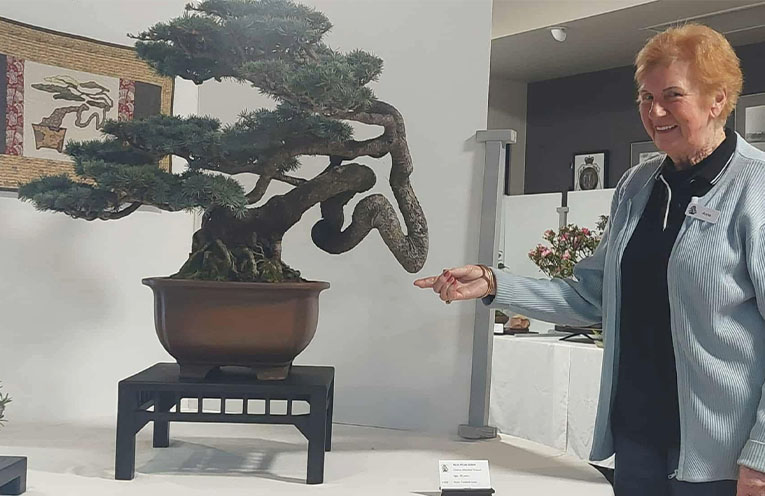THE Wauchope Bonsai Group hosted the annual Bonsai and Penjing Show at the Laurieton United Services Club (LUSC) from 13-14 September.
The showcase included a stunning array of traditional and native bonsai and penjing plants, and demonstrations from experienced group members.
Trees, pots and tools were also offered for sale.
“Whether you’re a seasoned grower or simply curious, this is the perfect weekend event to learn, shop, and admire the beauty of bonsai,” the group advised.
The art of Bonsai originated in China more than 2,000 years ago, where it is known as Penjing.
In the late 12th century Chinese monks introduced the Japanese to this ancient practice, and following WWII it spread across the globe.
Practitioners often refer to their designs as living sculptures, and they can become treasured heirlooms passed down through generations of families.
The Wauchope Bonsai Group has 40 active members and has been creating Bonsai and Penjing for more than 30 years.
They regard it as an artistic pursuit embodied by balance, harmony, and perspective.
There are many ways to start a Bonsai, the most popular being from root stock or from a plant taken from the wild; a process known in Japanese as Yamadori.
While often viewed as an indoor plant they tend to be far happier being outdoors; Bonsai growers liken it to raising a child as they require a lot of care, attention, sunlight, and daily watering.
Bonsai translates into English as tree in a pot; with plain and more refined pots preferred for these designs.
The plants are trained using very fine wire to create a more elegant look, and the focus is on the individual tree.
Chinese style Penjing are usually found in more brightly coloured elaborate pots and are displayed as part of a landscape which can include the use of multiple trees, small rocks, water, and figurines.
LUSC will host another Bonsai show in January, managed this time by the Hastings Bonsai Group.
John Cavendish of the Hastings Group told News Of The Area, “The next display will be spectacular with a huge variety of figs and old maples; these trees are at their best in January.”
Email hbgjohnc@gmail.com for more information.
By Rachael THORPE



